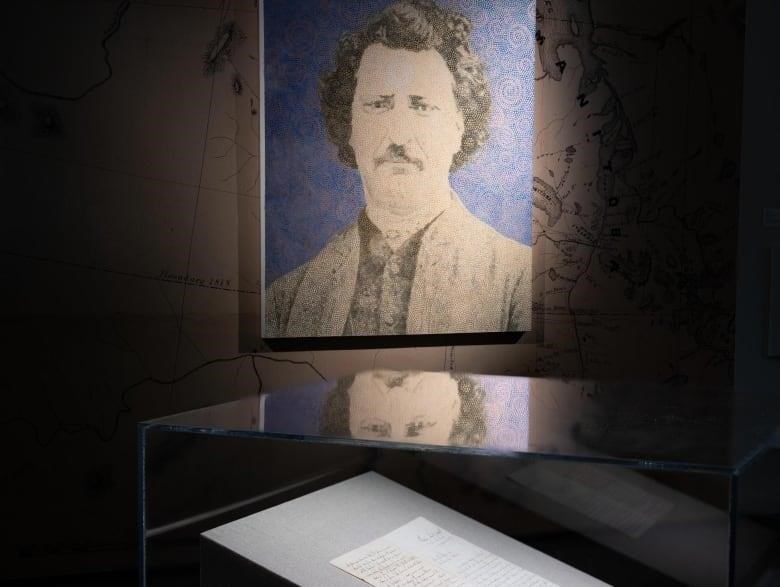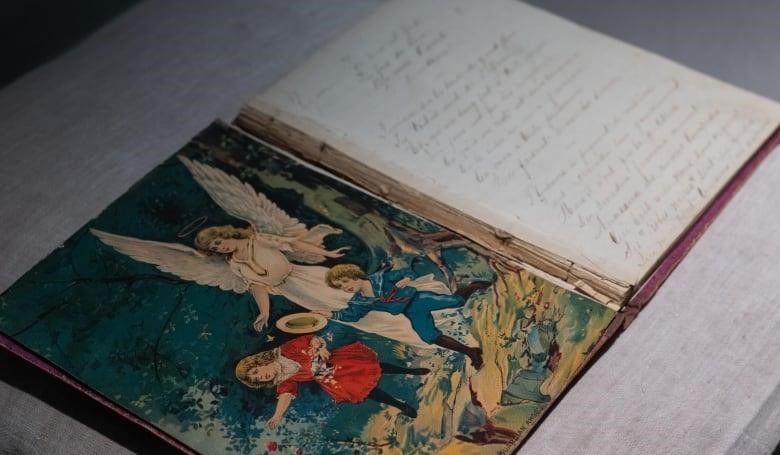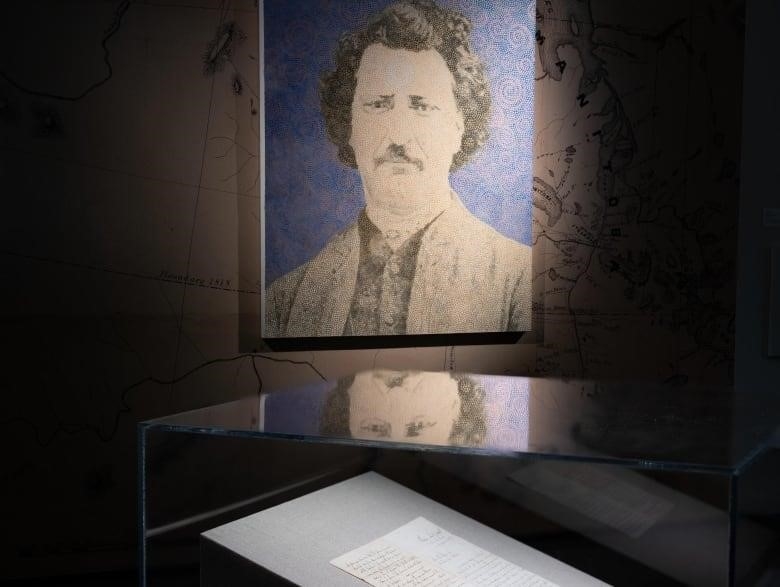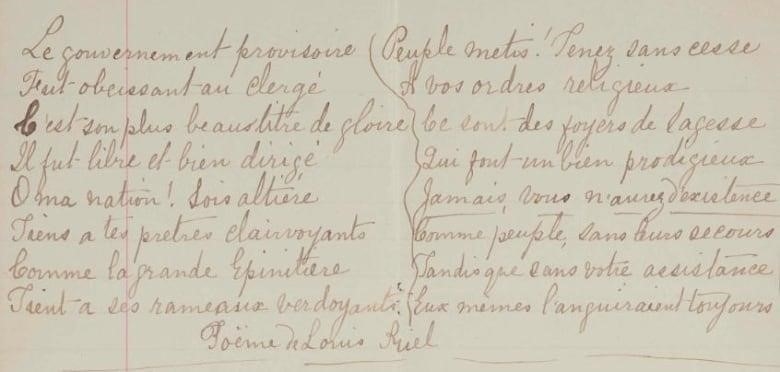
The Manitoba Métis Federation hopes that the National Heritage Centre can borrow things
Writings by Louis Riel that have never been seen before are on display at an exhibition in Calgary. They give a glimpse into the father of Manitoba’s personal life during the years he spent in exile after leading two historic Métis rebellions in western Canada.
The exhibit, Devotion: Louis Riel Writes Home, is at the Nickle Galleries at the University of Calgary until September 1. It has two of the Métis leader’s notebooks and about 37 letters between him and close family.
About 15 of these letters were written by Riel between 1874 and 1884, when he was in voluntary and official exile from Manitoba because of his role in the Red River Resistance, which ended in 1870. The exhibition’s curator, Annie Murray, said that Riel wrote these letters while he was in exile.
Murray, who is in charge of rare books and special collections at the University of Calgary, said, “Those were kind of Louis Riel’s lost years.”
“It’s that time in his life between the Red River Resistance and the North-West Resistance… I think he was homesick the whole time, and the pain of it all really came through in that.”

Riel led two rebellions by the Métis in western Canada. He was hanged for treason at the age of 41. Even though he is still a controversial figure in Canadian history, most people now agree that he was the first person to live in Manitoba.
The exhibition’s collection was acquired by the university for an undisclosed yet “significant” amount in 2022. They were held by Riel’s family for more than a century until a descendant of one of his siblings sold them anonymously to a rare bookstore in Alberta, said Murray.
“He wrote from all these different addresses in the United States, and then eventually he made his way to Montana, where he got married [and] had two kids,” she said.
“He was a school teacher at St. Peter’s Mission, and that’s when Gabriel Dumont and three other men went down and said: ‘You got to come up to Batoche. We need your help.'”
One of the featured notebooks contains Riel’s personal and spiritual reflections while he lived in the United States in the 1870s, said Murray. The other holds French transcripts of defence statements made by Riel and his lawyer during the Regina trial which resulted in his hanging.
Manitoba Métis Federation minister Anita Campbell said she got emotional when she learned about the items at the exhibition, because they bring Riel’s exile to life.
“It’s not just a letter, it’s not just an artifact, it’s not just a document — it’s our history,” said Campbell. “It’s part of who we are. He is part of who we are.”
Although all of the materials at the exhibition are available to view online, Campbell said she felt sad that she could only see them through a computer screen.
“The question becomes: it’s in Calgary — why is it not back in the Red River Métis area?”

The Manitoba Métis Federation has been working to retrieve and repatriate Riel’s belongings from Canadian museums throughout the years, but Campbell said there are other ways to bring them to the homeland of the Métis.
The federation would like to build a relationship with the University of Calgary to work out a loan of the collection so it can be displayed at Winnipeg’s Métis National Heritage Centre, which is set to open in 2026, she said.
It’s important that Métis people be able to view the items at the Winnipeg heritage centre because they “have an emotional and personal effect on us,” said Campbell.
“Do I think that everything should stay … in the Métis heritage centre? Of course, but is that the reality?”
Métis people exist all over Canada and the United States, as do Métis artifacts, said Campbell. Riel’s writings at the Calgary exhibition are likely not the last of his belongings to be discovered.
Murray understands concerns about Riel’s personal items being away from the Métis homeland, but said the University of Calgary was happy to house them.
“The family members made their decision about where they wanted to put it available for sale … I respect the decision,” she said.

While the in-person exhibition ends in September, Murray said its purpose was to introduce the collection to the world. There is a possibility for Riel’s writings to go on tour, but she said she would like to pass the baton to other curators and see how they engage with the pieces.
“It’s just the beginning,” she said. “It’s a special historical collection that I think people will feel connected to in different ways.”
Part of the Calgary exhibition includes a portrait of Riel by Métis artist David Garneau encircled by eight letters written by the leader and his family, which Murray placed atop a map of the Red River. She said it represents the close-knit family circle Riel maintained during his exile.
“The one word that kept coming up in my mind as I was thinking about this exhibition is that he is a man of devotion. He is devoted to his family. He is devoted to God. He is devoted to the Métis people.”

Murray said her work on the exhibition showed her how compelling Riel was as a person.
“He’s such a large figure in history. We’ve seen many pictures of him, and we hear a lot of stories, but it’s something else to look at a thing he wrote,” she said.
“It’s amazing to me, but not surprising, how he just keeps everyone’s interest after all this time.”
